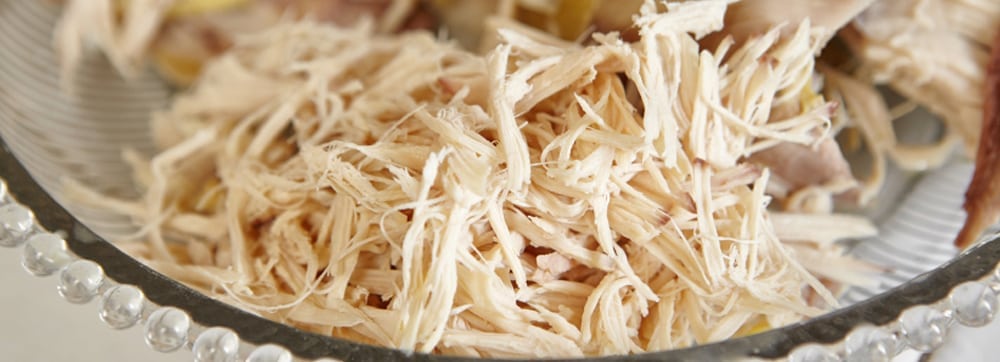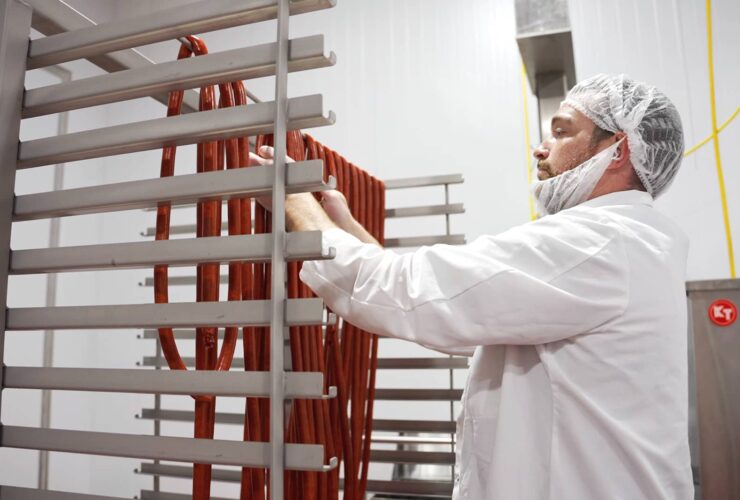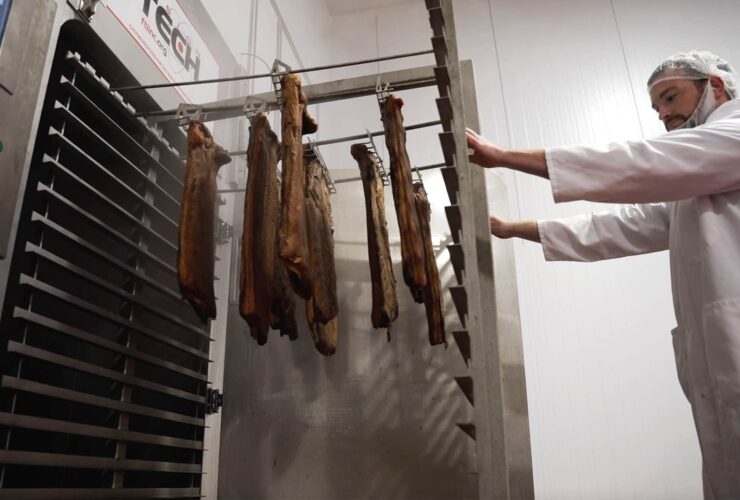The popularity of shredded chicken is at an all time high and smart companies are finding ways to produce a more consistent, hand pulled look to their product.
The reason is obvious: consumers want to buy a shredded chicken product that closely resembles what they could make at home. The more consistent the shreds, the more it looks like it was pulled apart with forks, the better.
Achieving that hand pulled look is difficult though. Shredding product by hand isn’t scale-able and often requires a large investment in labor, while some meat shredding machines can produce a clumpy product.
So how do you get that hand pulled look consumers want? Simple, you change how you cook your product.
Cooking: The Path to Better Shreds
[clickToTweet tweet=”The cooking process plays a large role in the quality of your chicken shreds.” quote=”The cooking process plays a large role in the quality of your chicken shreds.”]
A hand-pulled look to your shreds is achieved only when the connective tissue of your chicken product is broken down during the cook cycle and the muscle fibers are pulled apart from one another.
Perfecting the look and consistency of your chicken shreds starts in the cook cycle. If the cook cycle is too short, or your pork product isn’t held at temperature long enough, the connective tissue doesn’t break down as well, leaving you with “clumpy” and mushy shreds. Left in too long, and your shreds will be very fine.
The method of shredding, whether by hand or in a meat shredding machine, affects the quality of shreds minimally. If your chicken product isn’t cooked correctly, you won’t achieve desirable shred quality and consistency.
Cook Smaller, Uniform Chicken Chunks
The distance between the outside of the product and the core of the product constitutes how long you must cook the product to break down the connective tissue. Generally, this means getting the product up to 83°C (180°F) and holding for a period of at least 30 minutes.
Whole pieces of chicken (defined as larger than 4 inches) can take upwards of 12 hours to reach an internal temperature of 180°F. The extended length of time required to cook the product can cause the outside to become “mushy.”
The best method is to cut chicken into 3 or 4 inch sized pieces to improve cooking and product consistency.
Practice Step Cooking
Step cooking is the process of slowly increasing the cook temperature over a period of time to retain purge. Rather than starting the cook process at 190° F, start the process at 145° F and work up to 190° F over the course of 1-3 hours.
Step cooking prevents chicken from giving up outside moisture too quickly and retains a greater amount of purge. It also helps prevent the outside from getting “mushy”.
Best Step Cooking for Chicken
Chicken breast meat doesn’t have much fat and is usually only 1 inch thick, making it the easiest to cook and shred. Many companies choose to boil the breasts in water for 1.5-2 hours, and then shred.
Thigh meat, on the other hand, requires almost double the amount of time to cook as breast meat. Cooking thigh meat long enough to shred results in a lot of shrinkage of the thigh, about 30%-35%. When you do shred it, thigh meat tends to become dry, as all the fat is cooked out. Fat can be added back into the shredded meat.
Chicken breast meat should be steam cooked in a cook-in-bag, boiled (just add to boiling water and adjust cook time based on desired result), or open cooked (this might be a little longer, but retains a bit more moisture):
- Cook at 145° F for ½ hour
- Cook at 160° F for ½ hour
- Cook at 180° F-190° F for one hour
- Adjust time in last step as needed
The Ultimate Shred
Cooking your chicken product using the tips outlined above will improve the quality of your shreds and give you the hand pulled look that consumers want — whether you shred by hand or using an industrial meat shredding machine.
Play around with the cook cycle of your chicken product to dial in the exact process that will produce the shred you want — and then follow that process consistently. Doing so will improve the quality of your product and set you apart from the competition.






